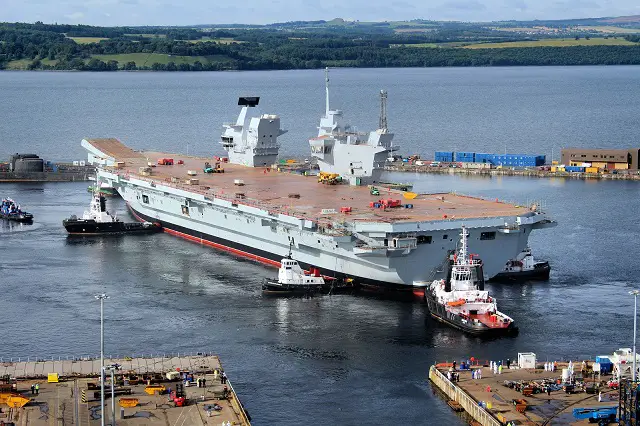It was
lifted into place by the huge Goliath crane at Rosyth dockyard back
in November 2013 – long before the ship was ‘launched’
by the Queen.
Since then the ever-growing ship’s company and engineers from
the Aircraft Carrier Alliance have been toiling on the ‘setting
to work’ phase of the 65,000-tonne warship’s constructions,
preparing its myriad of complex systems for use.
The radar has not been switched to full power – with hundreds
of people working on her daily there are power and safety limitations
to bear in mind.
But even on ‘restricted duties’ the radar immediately began
compiling an air picture, tracking aircraft on approach to Glasgow airport
(40 miles to the west of Rosyth) a well as transatlantic traffic to
and from the rest of the UK. (When the radar is turned all the way up
to 11, it can track up to 1,000 aircraft simultaneously as far as 250
miles away from the ship.)
Central to getting the LRR – as it’s commonly abbreviated
in the RN – going were weapon engineers PO Ian ‘Mac’
McDonald and LET Colleen Dunne.
“Having been a part of the long range radar programme since it
was delivered to Rosyth back in October 2013, it’s very satisfying
to see it ‘turning and burning’ – a milestone nearly
two years in the making,” said PO McDonald.
“It shows both the progress of the ship’s radar section
in conjunction with mission systems, and that (HMS) Queen Elizabeth
is another step closer to becoming an operational warship.” |

